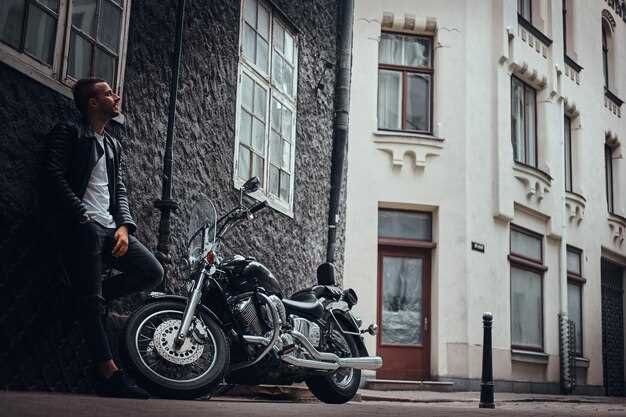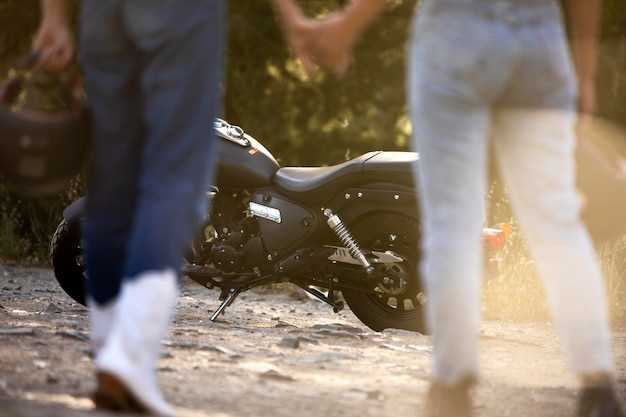

The debate between BMW and Harley-Davidson riders is as old as the two brands themselves. Each manufacturer has its own distinct identity, engineering philosophy, and fan base, making the decision of which motorcycle is superior a matter of personal preference. BMW, known for its precision engineering and cutting-edge technology, appeals to riders who prioritize performance and innovative features. In contrast, Harley-Davidson embodies a rich history and a unique lifestyle, appealing to those who value tradition, style, and the open road experience.
When comparing these two titans of the motorcycle world, one must consider various factors such as design, performance, comfort, and cost of ownership. While BMW motorcycles are often lauded for their superior handling and advanced safety features, Harley-Davidson‘s iconic aesthetic and robust engines have created a loyal following that spans generations. This article aims to dissect the attributes of both brands to help potential buyers make an informed choice based on their riding aspirations and lifestyle.
Ultimately, the question of superiority boils down to individual needs and desires. A rider seeking speed and advanced technology may lean towards BMW, while someone desiring a classic cruising experience might choose Harley-Davidson. By exploring the strengths and weaknesses of each brand, we strive to provide clarity in this ongoing debate.
BMW vs Harley-Davidson: Which Motorcycle Is Superior?

When it comes to motorcycles, two brands stand out prominently: BMW and Harley-Davidson. Each brand has cultivated a distinct identity and a loyal fan base, making the comparison between them intriguing for motorcycle enthusiasts. BMW is known for its engineering excellence, innovation, and advanced technology. The brand often incorporates cutting-edge features like traction control, ABS, and electronic suspension systems, providing a dynamic riding experience. BMW motorcycles often appeal to riders seeking performance, efficiency, and comfort, particularly on long-distance tours.
In contrast, Harley-Davidson embodies a spirit of freedom and rebellion, with a strong emphasis on classic styling and a unique riding culture. Harley motorcycles evoke a sense of heritage and nostalgia, attracting riders who value sturdy construction and a powerful V-twin engine sound. The customization options available for Harley models allow for a highly personalized motorcycle, fostering a community of enthusiasts who take pride in their distinctive rides.
In terms of performance, BMW has the upper hand with more horsepower and advanced handling capabilities, making it a preferred choice for sport-touring and adventure riding. Harley-Davidson, however, shines in its cruising ability, offering a laid-back riding experience that is perfect for leisurely rides along open roads. Additionally, both brands present a range of models catering to various riding styles, from touring bikes to cruisers.
Ultimately, the question of superiority between BMW and Harley-Davidson depends on individual preferences. Riders who prioritize technology and performance may lean towards BMW, while those who value tradition and community may favor Harley-Davidson. The choice between these iconic brands is less about which is superior and more about which motorcycle aligns better with the rider’s lifestyle and values.
Comparative Performance Analysis of BMW and Harley-Davidson Motorcycles
The performance of motorcycles can be assessed through various factors such as engine power, handling, braking, and overall rider experience. BMW and Harley-Davidson represent two distinct philosophies in motorcycle design and engineering, which reflects significantly in their performance metrics.
Engine Performance
- BMW: Typically equipped with advanced engineering, BMW motorcycles often feature high-performance engines with liquid cooling and superior torque delivery. Models like the BMW R1250GS offer a powerful boxer engine that generates impressive horsepower and torque.
- Harley-Davidson: Known for their iconic V-twin engines, Harley-Davidson motorcycles focus on low-end torque and a distinct throaty sound. The Milwaukee-Eight engine series showcases robust performance, although it may not match the peak horsepower levels of BMW counterparts.
Handling and Comfort

- BMW: Incorporates innovative technologies such as dynamic traction control and adaptive suspension systems, enabling superior handling across diverse terrains. Models like the S1000RR are lauded for their agility and stability, particularly in high-speed situations.
- Harley-Davidson: While typically heavier, Harley motorcycles offer a relaxed riding position with a focus on comfort for long-distance cruising. The low center of gravity aids in stability, making them forgiving for less experienced riders.
Braking System
- BMW: Often fitted with advanced ABS systems and multi-channel braking, BMW motorcycles provide precise control and short stopping distances, enhancing safety and performance in various conditions.
- Harley-Davidson: Many Harley models now incorporate ABS and reflex braking systems, but traditionally, their braking performance has been perceived as less aggressive compared to BMW options.
Overall Rider Experience
- BMW: Aimed at riders seeking high-tech features and superior performance, BMW motorcycles often include advanced displays, connectivity, and a more engaging riding experience, appealing to sport and adventure enthusiasts.
- Harley-Davidson: Tends to cultivate a sense of community and lifestyle, making the riding experience more about camaraderie and the open road. The unique style and heritage create a loyal customer base invested in brand culture.
In conclusion, the choice between BMW and Harley-Davidson motorcycles hinges on rider priorities. Those seeking cutting-edge performance and handling may gravitate toward BMW, while those who appreciate classic styling and a laid-back cruising experience might prefer Harley-Davidson. Each brand caters to distinct riding philosophies and preferences.
Maintenance Costs and Reliability: BMW vs Harley-Davidson
When comparing the maintenance costs and reliability of motorcycles from BMW and Harley-Davidson, several factors come into play. BMW motorcycles are often praised for their engineering excellence and advanced technology, which contribute to their overall reliability. Regular maintenance schedules tend to be more structured and comprehensive, ensuring that owners can identify potential issues before they become major problems. However, this can also lead to higher costs for parts and servicing, especially as specialized tools and knowledge may be required for certain repairs.
In contrast, Harley-Davidson motorcycles are known for their classic, simpler designs, making them generally easier and sometimes less expensive to maintain. The parts are widely available, and many independent shops offer services, which can help reduce overall maintenance costs. That said, maintenance frequency may vary greatly depending on the model and riding conditions, and some riders report experiencing reliability issues over time due to the heavy customization that many Harley owners pursue.
Ultimately, while BMW motorcycles might incur higher maintenance costs, they often deliver superior reliability due to rigorous engineering and quality standards. Harley-Davidson offers a more accessible maintenance experience, yet this can come with trade-offs in terms of long-term reliability. Factors such as rider experience, usage patterns, and local support networks also significantly impact the overall maintenance experience for both brands.
Rider Experience: Comfort and Ergonomics in BMW and Harley-Davidson Models
When it comes to rider experience, comfort and ergonomics play a crucial role in the appeal of both BMW and Harley-Davidson motorcycles. Each brand has its own approach to rider comfort, tailored to distinct riding styles and preferences.
BMW motorcycles are designed with long-distance touring in mind. Models like the BMW K1600GT feature a more upright seating position and adjustable windshields, which reduce fatigue during extended rides. The seat design often incorporates advanced ergonomic principles to provide lumbar support, allowing riders to maintain a comfortable posture over long distances. The placement of foot controls is also optimized to prevent cramping, making them ideal for those who enjoy long tours.
On the other hand, Harley-Davidson bikes embrace a classic cruiser style, which emphasizes low seats and relaxed riding positions. The iconic V-twin engines offer a unique riding experience that many enthusiasts find exhilarating. Models such as the Harley-Davidson Street Glide are built to provide a laid-back cruising experience, with wide handlebars that facilitate a comfortable grip and an easy reach to controls. However, some riders may find the footpeg positioning less accommodating during long journeys compared to the adjustable setups found in many BMW models.
In terms of suspension, BMW incorporates advanced technology, including electronically adjustable suspension systems, allowing riders to customize their setups according to riding conditions. This level of adaptability contributes to an elevated comfort level on various terrains. Meanwhile, Harley-Davidson focuses on a traditional suspension system that offers a smooth ride on paved roads but may not provide the same versatility as its German counterpart.
Ultimately, the choice between BMW and Harley-Davidson for rider experience comes down to personal preference. Riders seeking comfort for long-distance travels may gravitate towards BMW, while those who enjoy classic cruising aesthetics might prefer Harley-Davidson. Both brands offer unique ergonomic features that cater to different styles and rider needs.
